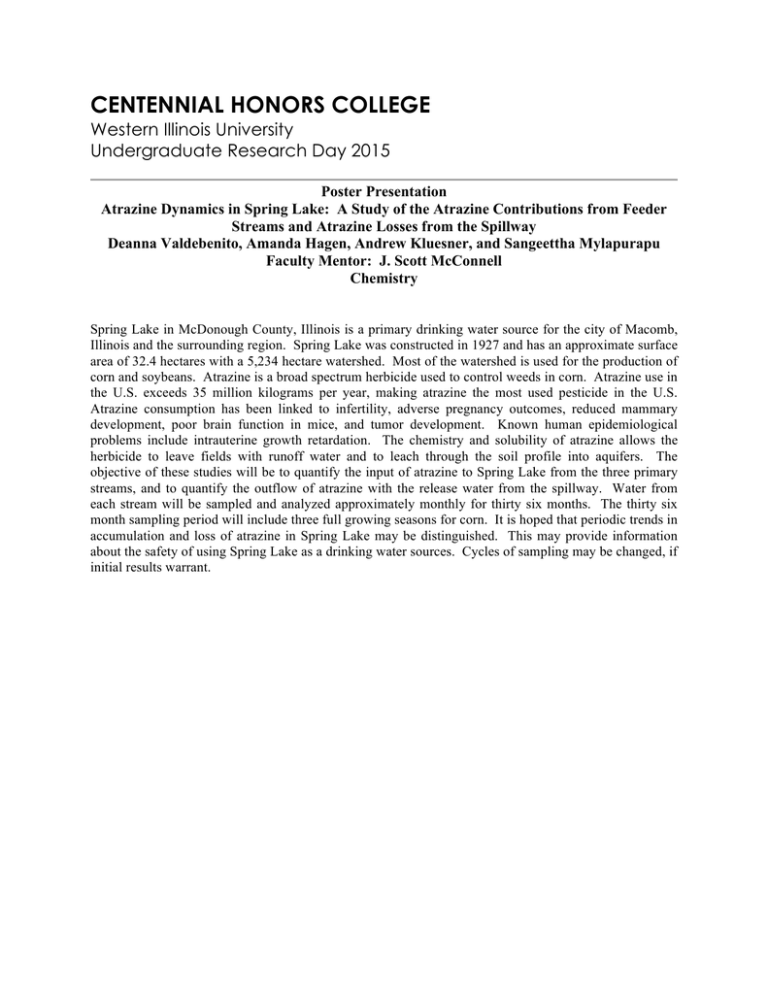CENTENNIAL HONORS COLLEGE Western Illinois University Undergraduate Research Day 2015
advertisement

CENTENNIAL HONORS COLLEGE Western Illinois University Undergraduate Research Day 2015 Poster Presentation Atrazine Dynamics in Spring Lake: A Study of the Atrazine Contributions from Feeder Streams and Atrazine Losses from the Spillway Deanna Valdebenito, Amanda Hagen, Andrew Kluesner, and Sangeettha Mylapurapu Faculty Mentor: J. Scott McConnell Chemistry Spring Lake in McDonough County, Illinois is a primary drinking water source for the city of Macomb, Illinois and the surrounding region. Spring Lake was constructed in 1927 and has an approximate surface area of 32.4 hectares with a 5,234 hectare watershed. Most of the watershed is used for the production of corn and soybeans. Atrazine is a broad spectrum herbicide used to control weeds in corn. Atrazine use in the U.S. exceeds 35 million kilograms per year, making atrazine the most used pesticide in the U.S. Atrazine consumption has been linked to infertility, adverse pregnancy outcomes, reduced mammary development, poor brain function in mice, and tumor development. Known human epidemiological problems include intrauterine growth retardation. The chemistry and solubility of atrazine allows the herbicide to leave fields with runoff water and to leach through the soil profile into aquifers. The objective of these studies will be to quantify the input of atrazine to Spring Lake from the three primary streams, and to quantify the outflow of atrazine with the release water from the spillway. Water from each stream will be sampled and analyzed approximately monthly for thirty six months. The thirty six month sampling period will include three full growing seasons for corn. It is hoped that periodic trends in accumulation and loss of atrazine in Spring Lake may be distinguished. This may provide information about the safety of using Spring Lake as a drinking water sources. Cycles of sampling may be changed, if initial results warrant.











